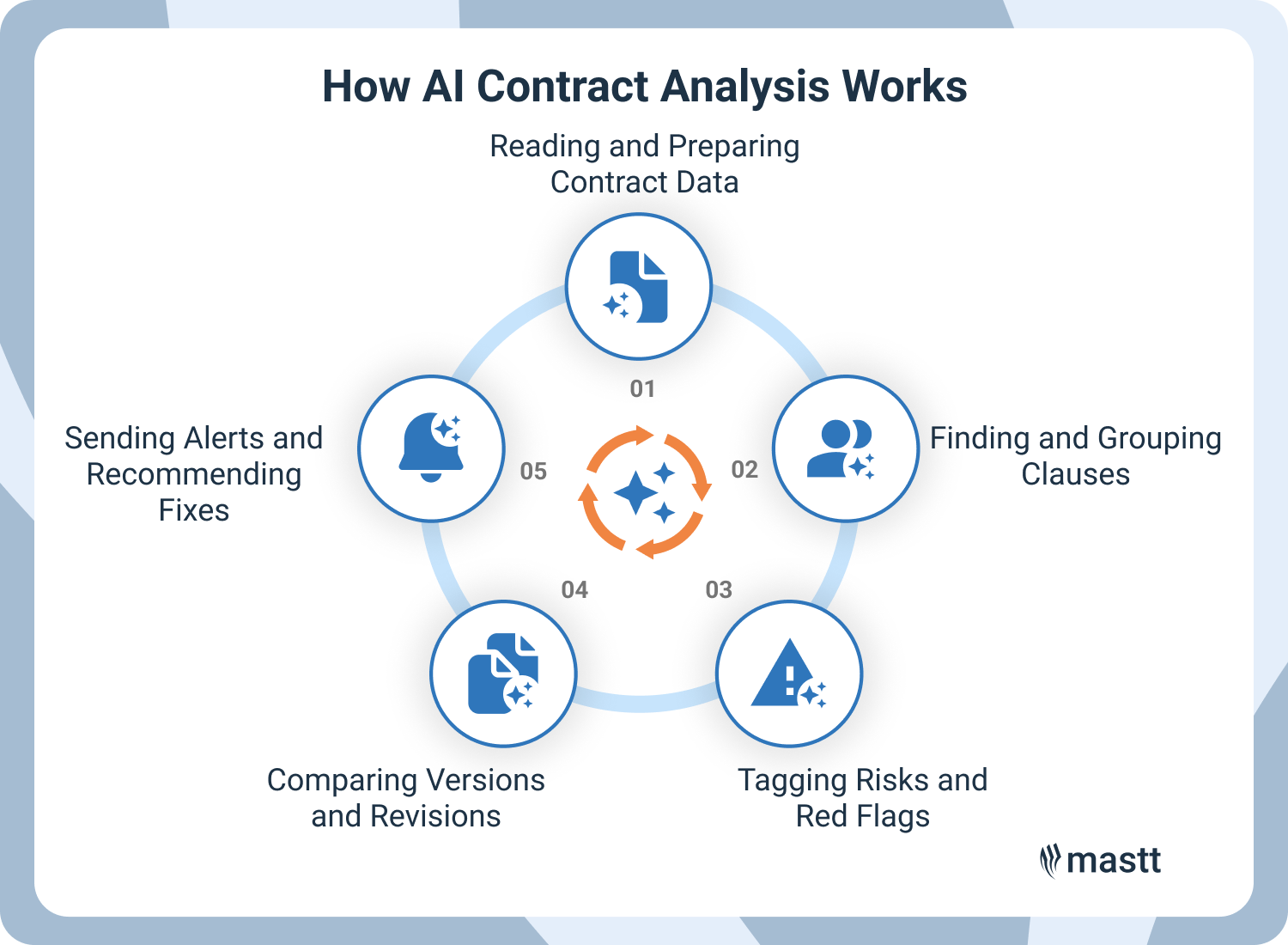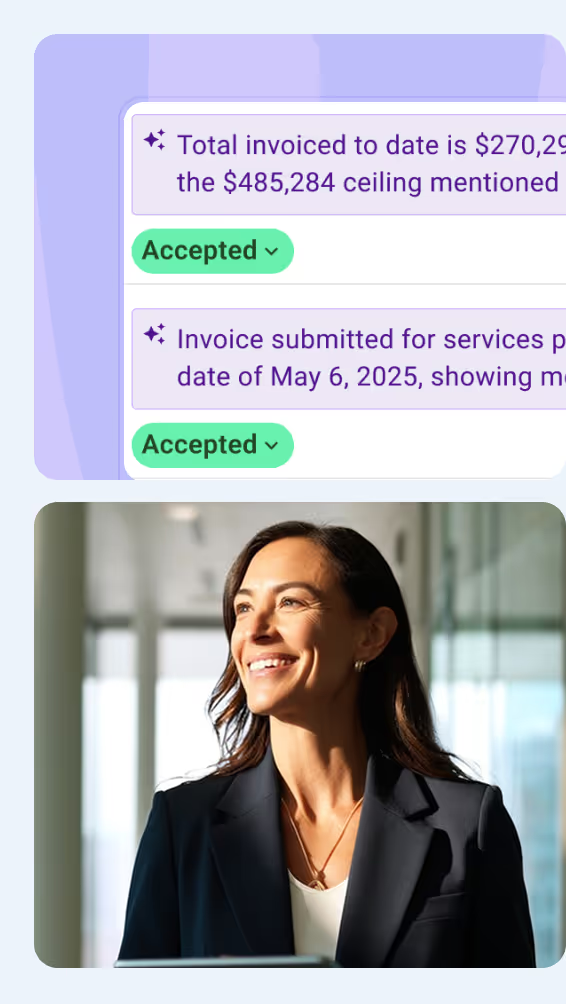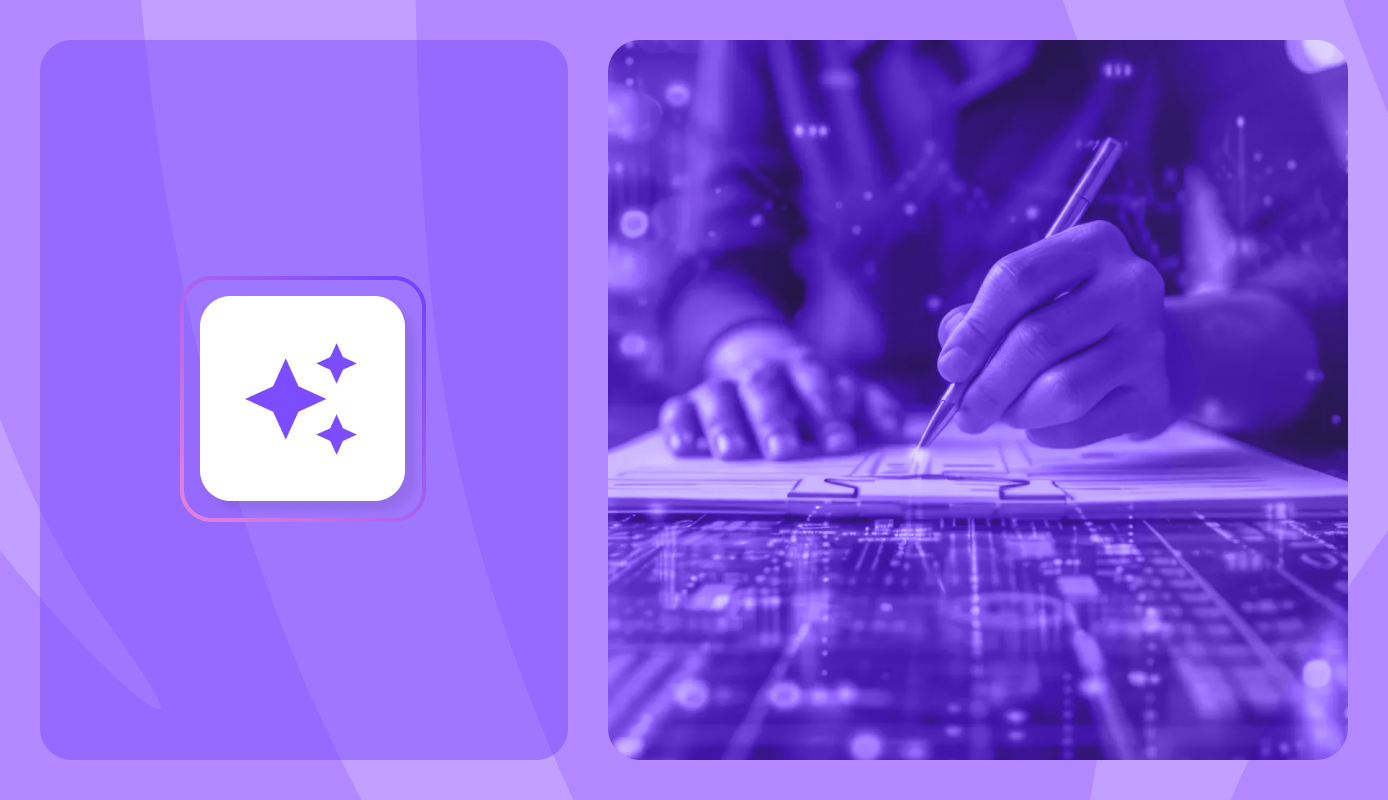AI contract analysis uses artificial intelligence to read and assess contracts, spotting key terms, risks, and obligations in minutes. For project teams managing piles of construction contracts and contractor agreements, AI makes the review process faster, more accurate, and easier to manage.
This article explains how AI contract analysis works in construction, why it matters for managing risk and cost, and the tools helping project teams analyze contracts faster and more accurately.
What is AI Contract Analysis?
AI contract analysis is the process of using artificial intelligence to read, extract, and interpret information from contracts. It helps identify clauses, obligations, risks, and compliance requirements without needing a full manual review.
The technology uses natural language processing (NLP) and machine learning to understand legal language. Optical character recognition (OCR) then turns scanned documents into searchable text. These systems analyze contract terms, compare versions, and flag unusual or missing clauses that could affect scope, payments, or liability.
In construction, AI contract analysis supports contract management by helping teams track changes, verify compliance, and maintain consistency across large volumes of documents. It turns hours of manual contract review into minutes of data-driven insight.
Why AI Contract Analysis Matters in Construction Projects
AI contract analysis is important in construction because it helps project teams move faster, reduce mistakes, and keep contracts compliant from the start. By automating reviews, AI spots missing clauses and risky terms that humans often overlook.
Here are the reasons AI has become essential for contract analysis:
- Prevents costly disputes: Early clause review helps catch vague, conflicting, or unfair terms that often lead to claims or arbitration.
- Improves cash flow control: AI highlights payment schedules, retention rules, and terms that directly impact when and how contractors get paid.
- Protects compliance: Detects missing insurance, licensing, or safety clauses that could expose the project to penalties or shutdowns.
- Manages scope changes: Keeps track of revisions to ensure everyone is working from the latest approved version.
- Builds consistency: Standardizes contract language across subcontractors, reducing confusion and rework.
- Supports smarter risk sharing: Identifies one-sided obligations, allowing both parties to negotiate fairer terms before signing.
Project teams juggle multiple contracts at once, each with its own terms, amendments, and risk factors. Missing a single clause can lead to payment delays or disputes. AI gives teams a clearer view of their contracts so decisions are based on facts, not assumptions.
How Artificial Intelligence Contract Analysis Works
AI contract analysis uses machine learning and NLP to read contracts, understand context, and extract key information automatically. AI can scan hundreds of pages to identify clauses, risks, and obligations in minutes, a task that used to take legal and project teams days to complete.
1. Reading and Preparing Contract Data
The AI contract analysis starts when you upload the necessary documents like contracts, drawings, or addenda into the platform. The system can turn files like PDFs, Word documents, or scanned images into text using OCR. This means it can read and analyze even older or image-based files accurately.
2. Finding and Grouping Clauses
After the text is ready, NLP can identify and group clauses by topic. It can sort them into common categories such as insurance, payment, indemnity, or warranties. The AI can also point out missing or unusual clauses that don’t follow standard templates.
💡 Pro Tip: Before uploading contracts to an AI construction contract review software, organize them by type, like subcontractor, supplier, or consultant agreements. Clean, labeled data helps the system learn faster and return more accurate results.
3. Tagging Risks and Red Flags
The AI model can tag parts of the contract that might create problems. It can highlight unclear responsibilities, conflicting payment terms, or missing insurance coverage. These tags can help project teams focus on what matters most instead of reading every line.
4. Comparing Versions and Revisions
AI can compare different versions of a contract to show what changed. It can mark text that was added, deleted, or updated. This makes it easier for teams to track negotiations, review revisions, and keep contracts consistent across multiple projects.
5. Sending Alerts and Recommending Fixes
The system can also send alerts for missing data, outdated clauses, or language that doesn’t match company or legal standards. Some advanced tools can even suggest alternative wording or pull approved clauses from templates to fix issues quickly.
The more contracts the AI reviews, the smarter it can become. It can learn your company’s preferred terms, structure, and risk patterns over time. When connected with contract lifecycle management or project management systems, it can link contracts, compliance checks, and team communication all in one place.

Key Use Cases of AI Contract Analysis in Construction
The most common uses include detecting inconsistencies, reviewing change orders, verifying progress payments, and balancing risk allocation. AI tools can also ensure compliance with standards that guide contracts worldwide.
- Pre-award Review: AI can detect inconsistencies between bid scope and contract language, helping teams confirm that pricing, timelines, and deliverables match what was proposed.
- Change Order Validation: It can compare proposed changes with existing terms to make sure all adjustments align with the original contract scope and cost structure.
- Progress Payment Terms: AI can check that progress payment clauses follow certification for payment requirements and include the correct lien waiver language.
- Risk Allocation Checks: It can highlight one-sided clauses in subcontractor agreements that transfer too much risk to smaller contractors or suppliers.
- Compliance Monitoring: AI can verify that contracts include safety, insurance, and environmental requirements that meet project and jurisdictional standards.
💡 Pro Tip: Train your AI model with sample contracts from different standards like FIDIC and AS4000. This can help the system recognize regional language differences and improve accuracy when reviewing international projects.
Challenges and Limitations of AI in Contract Analysis
One of the most common challenges in AI contract analysis is its limited ability to understand context. Even advanced systems can misinterpret intent in complex clauses or project-specific language. The quality of results also depends on clean data, proper setup, and consistent human oversight throughout the review process.
Here are the main issues project teams face when using AI for contract analysis:
⚠️ Limited context understanding: AI can misread intent in complex or unusual contract clauses that require legal judgment.
⚠️ Dependence on clean data: Poorly scanned, incomplete, or inconsistent contracts can reduce accuracy and cause missed details.
⚠️ Data security risks: Uploading contracts with sensitive or personal information requires strict data protection and compliance measures.
⚠️ Outdated templates: AI models trained on old or irrelevant contracts can recommend terms that no longer meet industry standards.
⚠️ Lack of domain knowledge: Most AI tools are generic and need training on construction-specific terms, standards, and contract formats.
⚠️ Human oversight still needed: AI can flag risks, but final interpretation and negotiation must stay with legal and project professionals.
AI works best as a support tool, not a replacement for expert review. Teams that pair AI with human expertise see the biggest improvements in speed and reliability.
How to Implement AI Contract Analysis in Your Workflow
AI contract analysis fits smoothly into your existing contract and project management systems. Success depends on planning, data quality, and getting your team comfortable with the technology.
Here’s how you can introduce AI contract analysis into your workflow:
💡 Pro Tip: Pair AI analysis tools with your company’s contract templates and approval workflows. This helps the system recognize standard language faster and gives project managers instant visibility into contract risks before signing.
What to Look for in AI Contract Analysis Software
Choosing the right AI contract review software starts with one critical feature: data security. Construction contracts hold sensitive financial and project details, so the system must keep all information protected and confidential.
Here are the key features to look for when choosing AI contract analysis software:
- Data privacy and security: Look for end-to-end encryption, secure cloud storage, and compliance with standards like ISO 27001 or SOC 2.
- Clause recognition accuracy: The software should correctly identify and categorize key terms such as payment schedules, warranties, and risk clauses.
- Integration with existing systems: Choose tools that can connect with your contract management or project platforms to streamline workflows.
- Customizable templates: The system should let you train it with your company’s own clauses and formats to improve accuracy.
- User-friendly dashboard: Visual summaries and searchable highlights help project managers and legal teams review faster.
- Audit and reporting tools: Built-in analytics make it easier to track reviews, monitor risks, and verify compliance.
💡 Pro Tip: For construction teams, choose an AI tool built for your industry. Use Mastt’s AI Contract Review to securely manage and analyze construction contracts. It’s designed for project owners, PMs, and contract managers who need fast, accurate insights without compromising data security.
Top AI Contract Analysis Tools for the Construction Industry
The best software combines automation, strong data security, and compliance checks. It helps project owners, PMs, and contract managers manage every stage of the contract lifecycle with more confidence and control.
Each platform brings something different to the table, but tools designed for construction, like Mastt, stand out because they understand project workflows and contract structures unique to the industry.
Let AI Simplify Your Construction Contract Analysis
AI contract analysis is changing how construction teams manage agreements. It helps project owners, PMs, and contract managers review contracts faster, reduce disputes, and make better decisions backed by data instead of assumptions.
Let AI handle the paperwork so your team can focus on building. Tools like Mastt give you faster insights, tighter control over risk, and the confidence to move projects forward with fewer surprises.






.avif)






